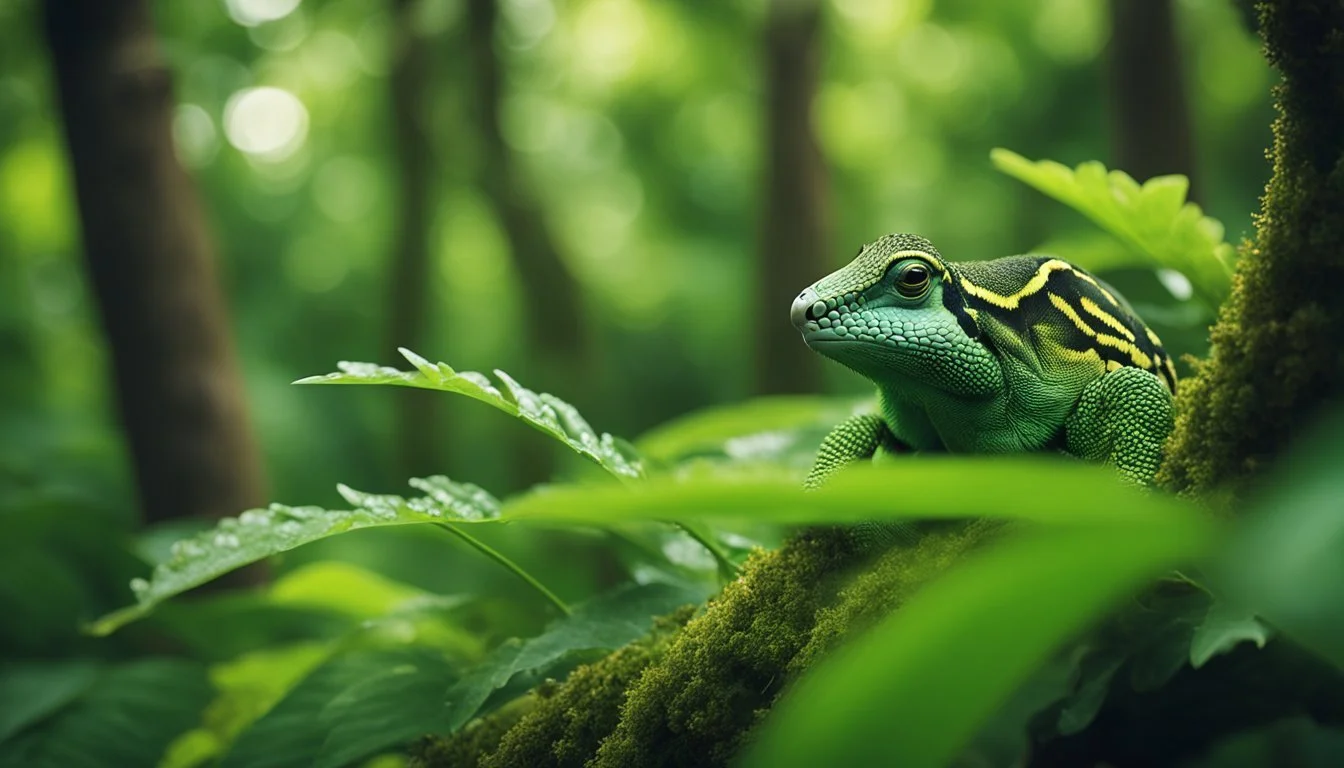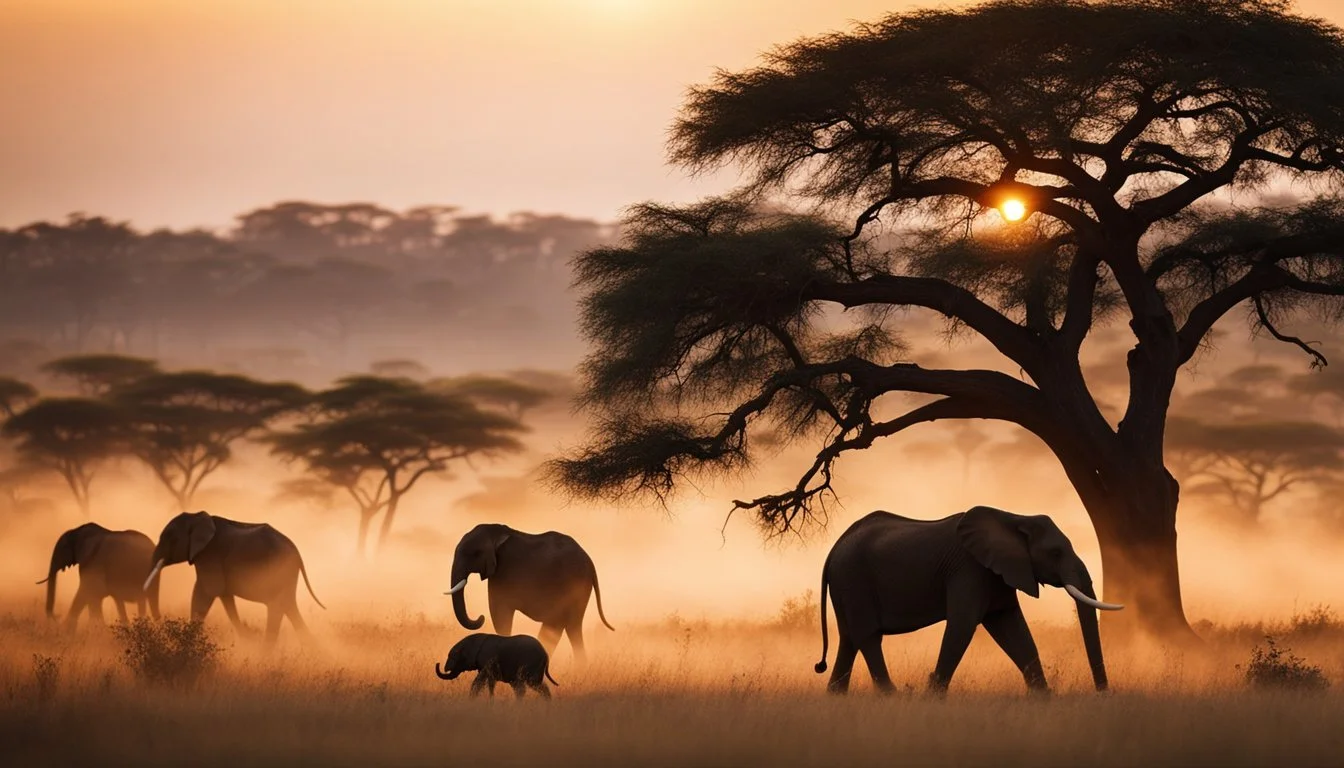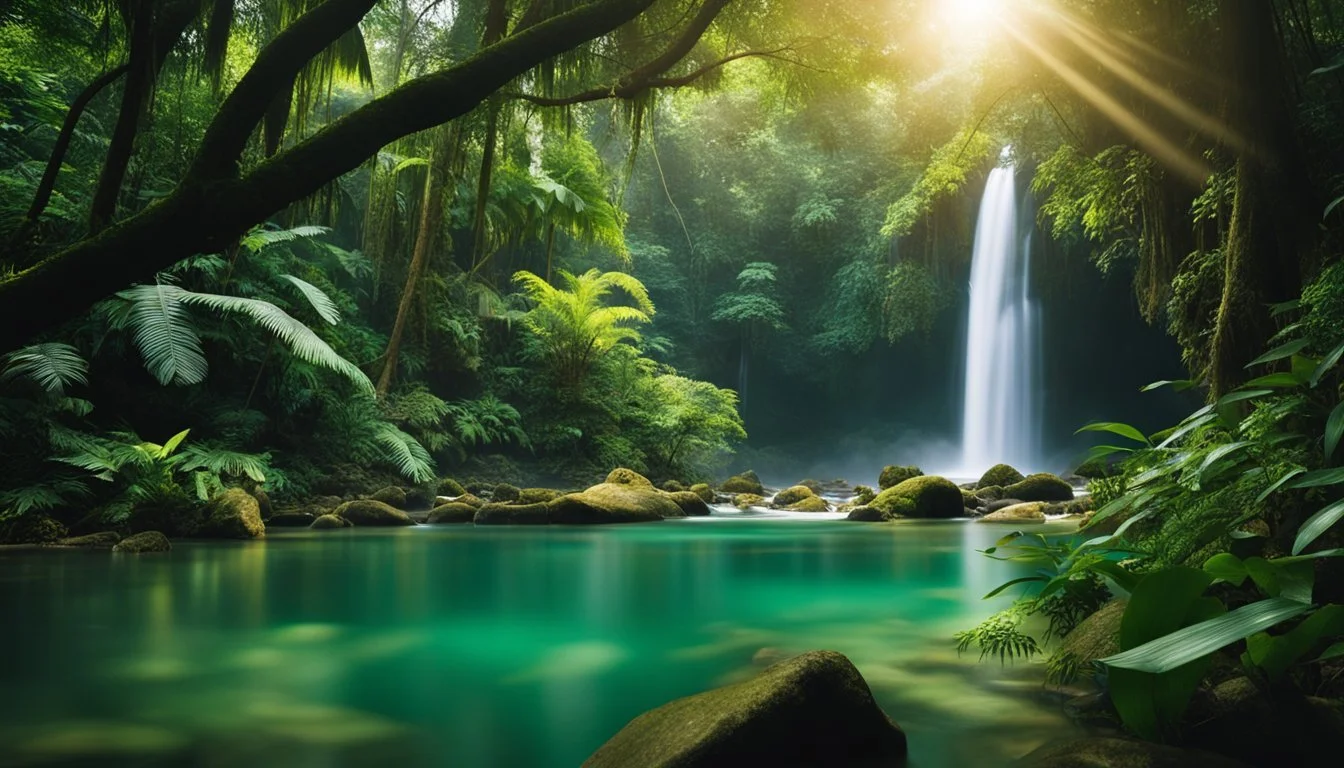The Art of the Nature Documentary
Capturing the Beauty and Wonder of the Natural World
The art of the nature documentary lies in its ability to capture the beauty and wonder of the natural world through the lens of a camera. It’s a genre that not only showcases stunning landscapes and captivating wildlife but also tells important stories about our environment and the creatures that inhabit it. From the majestic migration of wildebeests across the African plains to the delicate dance of bees in a secluded North Macedonian village, these documentaries offer a window into worlds often unseen by human eyes.
Nature documentaries are more than just visual spectacles; they are educational tools and catalysts for conservation. Renowned series like "Planet Earth" and "Blue Planet" narrated by David Attenborough have not only won numerous awards but have also inspired a deeper appreciation and urgency for environmental protection. These films blend breathtaking cinematography with compelling narrative to emphasize the interconnectedness of life on Earth.
Through pioneering techniques and dedication, filmmakers behind these documentaries bring to light the remarkable and intricate details of nature's splendor. They travel to the farthest corners of the globe, enduring challenging conditions, to capture those perfect, illuminating moments. Whether it's the rhythmic patterns formed by scattered beans casting shadows or the grandeur of a mountainside hive, these depictions remind viewers of the delicate balance and profound beauty of the natural world.
History of Nature Documentaries
Nature documentaries have evolved significantly over the decades. Innovations in technology and pioneering filmmakers have played essential roles in this evolution, bringing the wonders of the natural world to audiences worldwide.
Early Beginnings and Evolution
The origins of nature documentaries trace back to the early 20th century. One of the first notable films was Nanook of the North (1922), which documented the life of an Inuit family.
With The Silent World (1956), Jacques Cousteau brought underwater exploration into the spotlight, earning an Academy Award. In the 1970s, Mutual of Omaha’s Wild Kingdom captivated TV audiences with its wildlife adventures. These early works laid the foundation for future nature filmmaking.
Technological Advancements
The advent of color film in the 1950s revolutionized nature documentaries, allowing filmmakers to capture flora and fauna in vivid detail.
In the 2000s, high-definition (HD) technology transformed natural history programming. The BBC's Planet Earth (2006) showcased HD footage of wildlife and habitats, setting a new standard for visual quality.
Modern advancements like drones and 4K cameras have further enhanced the ability to document remote and previously unreachable locations, pushing the boundaries of what audiences can experience.
Influential Nature Documentaries
Several documentaries have had a profound impact on the genre. The Blue Planet (2001), narrated by David Attenborough, brought unprecedented insights into marine life.
March of the Penguins (2005) highlighted the life cycle of emperor penguins, winning an Academy Award for Best Documentary Feature. Our Planet (2019), focused on the impacts of climate change, combining stunning visuals with a crucial environmental message.
These works not only entertain but also educate and inspire action, illustrating the power of nature documentaries in raising awareness about the natural world.
Techniques in Filmmaking
Creating nature documentaries involves mastering specialized techniques. Essential aspects include cinematography, sound recording, and storytelling through editing, each uniquely challenging in natural environments.
Cinematography in the Wild
Cinematography in nature documentaries requires patience and advanced equipment. Wildlife cinematographers use long lenses to capture animals without disturbing them. Camera traps and drones provide unique perspectives, reaching areas inaccessible to humans.
High-definition and slow-motion cameras highlight details like the flutter of a hummingbird's wings or the ripple of a predator's muscles. Filmmakers also employ time-lapse photography to show processes like blooming flowers or changing landscapes.
Lighting presents another challenge. Natural light must be skillfully managed to highlight the subject while maintaining the authenticity of the scene.
Sound Recording in Natural Habitats
Capturing sound in the wild is critical for a documentary's immersive experience. Filmmakers use high-quality directional microphones to isolate animal calls and environmental sounds.
Field recordists often work with parabolic microphones to capture distant sounds without interference. Synchronizing these recordings with the visual footage ensures a cohesive experience for the viewer.
Additionally, using ambient sound enriches the atmosphere, making scenes more realistic. Wind, rustling leaves, and water flows all contribute to the auditory landscape.
Storytelling Through Editing
Editing crafts the narrative of a nature documentary. Editors curate hours of footage into a compelling story, highlighting the drama and beauty of nature.
They often employ techniques like cross-cutting to build tension and transitions that maintain continuity. Color correction ensures visual consistency across different lighting conditions.
Sound design, including adding music and balancing sound levels, enhances emotional engagement. The final product must be both informative and evocative, engaging the audience on an intellectual and emotional level.
Challenges and Solutions
Creating nature documentaries involves various challenges, such as accessing remote locations, ensuring minimal environmental disturbance, and addressing ethical considerations. Documentarians must expertly navigate these challenges to succeed.
Navigating Remote Locations
Filming nature documentaries often requires traveling to extremely remote and harsh environments. Producers and crews must be prepared for difficult conditions like extreme weather, rugged terrain, and limited access to resources.
Equipment selection is crucial. Lightweight, durable cameras and drones enable capturing high-quality footage without excessive burden. Planning and logistics play significant roles; coordinating transport, local guides, and permits is essential.
Contingency plans are vital to address unexpected challenges. Proper safety measures, including first-aid training and equipment, can mitigate risks.
Minimizing Human Impact
Reducing human impact on wildlife and natural habitats is paramount. Crews must blend into the environment to avoid disturbing animals or altering ecosystems inadvertently.
Techniques such as remote monitoring with motion sensors and camera traps help capture wildlife behavior without direct human presence. Moreover, staying on designated paths and using camouflage hides can minimize disruption.
Adherence to strict ethical standards ensures that the natural world remains as undisturbed as possible during filming, benefiting both the subjects and future conservation efforts.
Ethical Considerations
Ethical dilemmas frequently arise in nature documentary production. Filmmakers must decide how to portray interactions between predators and prey and whether to intervene in life-and-death situations.
Filmmakers often face choices regarding staging scenes for dramatic effect. Honesty in representation and transparency with the audience are critical to maintaining integrity and trust.
Ensuring fair portrayal also includes considering the impact of human activities on nature and accurately presenting those effects. Respect for wildlife and their habitats remains the guiding principle throughout the process.
Wildlife Conservation Through Film
Nature documentaries have the power to spotlight critical conservation issues and mobilize global action. Their visual storytelling and intimate glimpse into wildlife create a deep emotional connection to the natural world.
Raising Awareness
Nature documentaries play a vital role in highlighting endangered species and the impact of human activities on ecosystems. Films like The Cove expose the harsh realities of practices such as whale hunting, invoking strong emotional responses that can lead to public outcry and policy changes.
These documentaries also educate viewers about less-known species and threats. For example, The Velvet Queen introduces audiences to the elusive snow leopard and the challenges it faces in the wild. By bringing these issues to light, documentaries serve as a crucial educational tool.
Empowering Conservation Efforts
Beyond raising awareness, wildlife documentaries actively support conservation initiatives. By showcasing successful conservation stories and the efforts of scientists and activists, they inspire viewers to take action.
Films often partner with conservation organizations, driving funding and support. For instance, the success of planet Earth led to increased support for various wildlife programs. Documentaries provide a platform for promoting conservation campaigns, urging viewers to participate through donations, volunteering, or advocacy.
In addition, documentaries create a sense of urgency and importance around wildlife conservation. They offer concrete solutions and empower individuals to contribute to protecting the natural habitats showcased on screen.
Behind the Scenes
Creating a nature documentary involves intricate coordination, specialized equipment, and passionate professionals dedicated to capturing the Earth’s marvels.
Equipment and Gear
Filmmakers utilize state-of-the-art cameras like the RED Digital Cinema cameras or the ARRI Alexa to achieve stunning visuals. High-definition drones provide aerial views that were once impossible. Underwater filming requires waterproof housings and lighting systems, such as those from Nauticam. Camera traps and night vision enable the capture of elusive nocturnal creatures. For stabilization, gimbals and hydraulic mounts are essential tools. High-speed cameras like the Phantom Flex4K are employed to record slow-motion sequences with immaculate detail. Without these advanced tools, achieving the remarkable quality seen in modern nature documentaries would be unattainable.
The Production Crew
A skilled team is crucial for the success of a nature documentary. Directors and cinematographers lead the visual storytelling. Field researchers and biologists provide the necessary insights into animal behavior and habitats. Camera operators endure extreme conditions, sometimes spending days in hides or traversing risky terrains. Sound recordists capture the natural soundscapes, often spending long hours in silence to record a single call. Post-production editors then stitch together the footage, creating a seamless narrative. Narrators, like David Attenborough, lend their voices to bring depth and authority to the story.
Logistics and Planning
Logistical planning is a herculean task, ensuring all the required permits, visas, and permissions are secured. Scheduling must account for animal migrations, weather patterns, and seasonal behaviors. Transporting gear to remote locations involves meticulous planning, from chartering helicopters to traveling on foot. Base camps need to be established for long-term shoots, requiring supplies and communication tools for the crew. Safety protocols are in place to handle potential encounters with wildlife. Producers must balance budgets tightly while allowing for unforeseen expenses. Detailed planning ensures that crews can adapt to the unpredictable nature of wildlife filming, capturing unique and rare moments.
The Role of Narration
Narration enhances nature documentaries by adding context and depth to visual stories. It guides viewers, evokes emotions, and strengthens the overall impact of the film.
Writing the Script
A well-crafted script is central to effective narration in nature documentaries. Writers must remain factual while being engaging. They should describe scenes vividly, using precise language that complements the visuals. Balancing scientific accuracy with relatable storytelling is critical, ensuring that information is both educational and captivating.
Writers often collaborate closely with researchers and filmmakers. This collaboration ensures that the narration accurately reflects the filmed content while remaining compelling. Additionally, the script should flow seamlessly, guiding the audience’s emotional journey from curiosity to awe.
Voice-Over Techniques
The choice of narrator and their delivery style significantly influence the documentary’s reception. A narrator with a clear, expressive voice can make the content more engaging. Intonation, pace, and emphasis are vital elements that narrators must master to maintain viewer interest.
Professional narrators also pay attention to timing, ensuring their commentary aligns perfectly with the visuals. They often rehearse sections multiple times to achieve the desired effect.
Some documentaries benefit from a more dramatic narration, while others require a calm, soothing tone. The technique varies depending on the documentary's theme and target audience.
Future of Nature Documentaries
Nature documentaries are poised for a transformative future, driven by technological advances and changing viewer preferences. Key trends include innovations in filming techniques, the rise of virtual reality, and the significant role of streaming services.
Innovations in Filming
Advancements in camera technology are revolutionizing how nature documentaries are filmed. Drones now capture aerial views that were previously impossible, giving audiences a bird's eye view of landscapes. High-definition and 4K cameras offer unprecedented detail, showing the intricate textures and colors of wildlife. Additionally, remote sensing technologies like LiDAR provide insights into environments that are difficult to access.
Robotic cameras also play a crucial role. These devices can be placed in remote or dangerous locations, capturing footage without human intrusion. This minimizes impact on wildlife and ensures more natural behavior is filmed. Such innovations enhance the storytelling and bring viewers closer to nature.
Virtual Reality and Immersive Experiences
Virtual reality (VR) offers a new dimension to watching nature documentaries. It allows viewers to explore environments in an immersive, 360-degree perspective. Projects like "David Attenborough's Great Barrier Reef Dive VR" enable audiences to experience underwater ecosystems firsthand.
Augmented Reality (AR) applications further enrich the experience. AR can overlay information onto live footage, providing real-time data about species, habitats, and behaviors. This educational aspect makes documentaries more interactive and engaging, especially for younger audiences. The development of haptic feedback devices, which simulate physical sensations, could also enhance the sense of presence.
The Influence of Streaming Services
Streaming services like Netflix, Amazon Prime Video, and Apple TV+ are redefining how nature documentaries reach audiences. These platforms offer a vast library of content accessible at any time, catering to a global audience. They also facilitate the production of high-quality documentaries by providing substantial budgets and resources.
The data-driven approach of streaming services allows for better-targeted content. Viewer preferences and feedback can be analyzed to create documentaries that align with audience interests. This ensures a more tailored viewing experience, increasing the engagement and educational impact of the genre.
Subscription models also play a role in funding new projects, allowing for continuous innovation and exploration in the field of nature documentaries.






